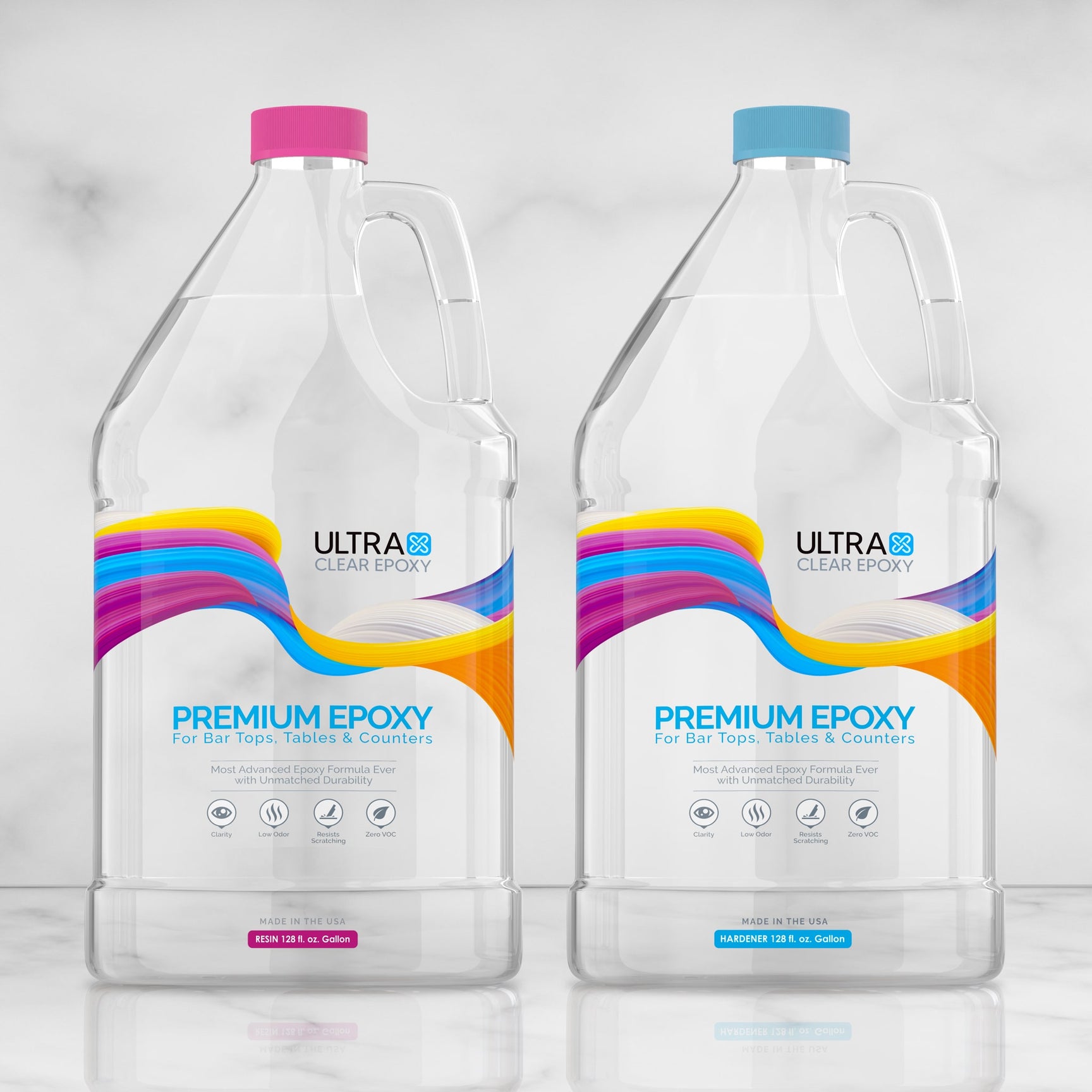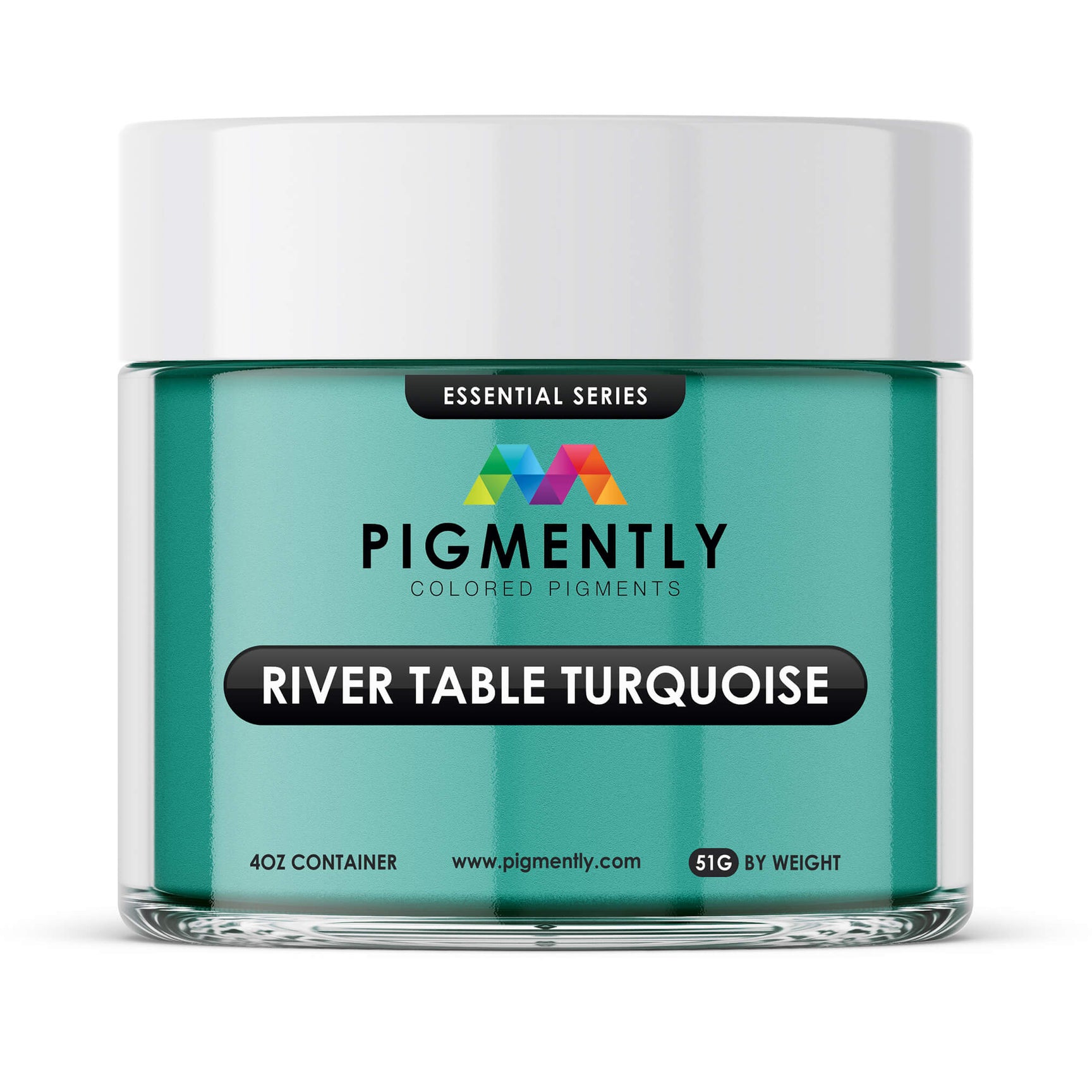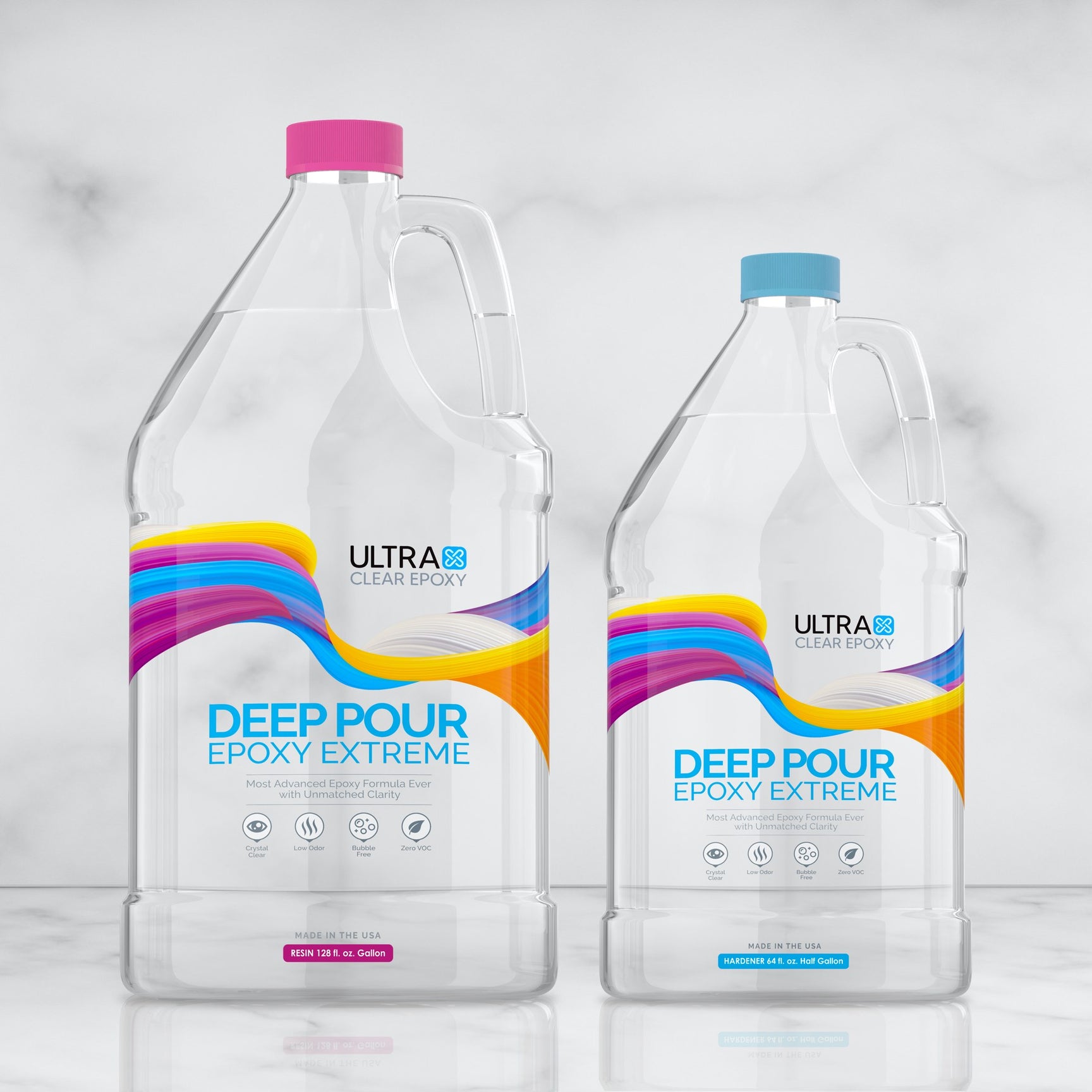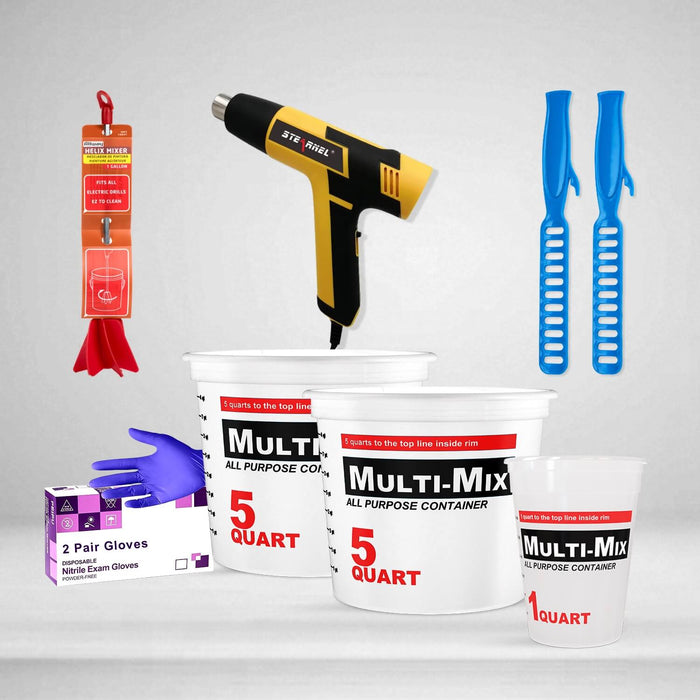Planning your first—or second or third—epoxy project can be a bit daunting. There's a lot to understand when you're new to the concept, and while epoxy is relatively straightforward to apply once you get started, there's still some necessary planning involved that requires some careful deliberation.
One of the first things you'll do when planning an epoxy project is going to be to figure out what type of epoxy you need, and then choose a source to acquire it from.
In this article, we'll be explaining 5 ways to avoid common mistakes when shopping for epoxy as an epoxy resin newcomer.
5 major missteps to avoid when shopping for epoxy
After you've decided that you want to perform an epoxy project, you'll want to figure out which epoxy brand and type you'll use.
The good news is that once you've found a brand you like—one that meets your expectations—you likely won't need to repeat the search for your next project.
But prior to that, it's important to choose carefully. Here are the 5 biggest missteps people make that we'll explain how to avoid, so you can achieve your project goals with peace of mind and satisfaction:
- Choosing the wrong epoxy type for a project.
- Purchasing budget brand epoxy to save on upfront costs.
- Buying from an unknown or disreputable epoxy dealer.
- Not ordering enough epoxy for a project.
- Ordering from a dealer who won't deliver in time.
Let's take a look at each of these, one by one.

Misstep #1: Choosing the wrong epoxy type for a project.
One mistake beginners often make is assuming that all epoxy works more or less the same, or that there's only one type of epoxy.
The truth is that, while one epoxy type (Table Top Epoxy) is indeed highly prevalent, there are other types of epoxy that are far better suited for certain types of projects and user goals.
Using an epoxy that isn't suited for your project can lead to imperfections and blemishes, and probably a more significant time investment to avoid/fix these issues. Thus, it's essential to understand which type(s) of epoxy your project calls for.
What are the 3 common types of epoxy used for finshes?
There are a few different types of epoxy used by professionals and DIY enthusiasts alike. These are:
Type #1: Table Top Epoxy
Table top epoxy is the strongest, most durable form of epoxy. It's viscous, thick, and cures to an ultra-hard surface strength that resists blunt impacts, scratching, cracking, and more better than any other type. Its one notable downside is that it can't be poured in thick layers without a high risk of blemishes such as air bubbles.
Our UltraClear Bar & Table Top Epoxy is a premium-grade resin that cures to a crystal-clear finish of unmatched surface strength.
Type #2: Deep Pour Epoxy
In contrast to table top epoxy, deep pour epoxy is considerably thinner. It flows more like water than a thick syrup, and it can be poured in thick layers of up to 1 or 2 inches, depending on the quality, but it loses some of the durability as a result. In other words, the true value of deep pour epoxy lies in the depth of its pours.
Epoxy and porous surfaces, an excellent pairing.
Most epoxy substrates are porous, which means that their surfaces have numerous tiny holes, often imperceptible, in which little pockets of air reside. When epoxy is poured onto a porous substrate, it seeps into any surface-level pores and pushes the air out of them. That's part of how epoxy develops a strong bond with a surface, by anchoring itself to these many pores.
Air bubbles, an unfortunate side effect.
Unfortunately, because some epoxy variants are highly viscous, it's common for air to get trapped within their finish before it can successfully escape; this is how air bubbles form. The more viscous an epoxy variant is, the more likely you are to end up with a myriad of air bubble imperfections.
It's possible to avoid this in many cases by first applying a seal coat, which is a thin coating of epoxy that gets brushed onto a substrate surface prior to pouring a full coating. Yet when a project calls for a deep or thick epoxy coating, a seal coat is often not enough.
Epoxy itself can pull in air as it flows from the mixing container to the substrate and spreads itself out. Normally these air bubbles are removed with a heat gun, but if the layer poured is too thick for the epoxy being used, the heat gun may not be able to reach them all.
To avoid the air bubble issue for deep layers, it's best to use a deep pour epoxy, which is an epoxy resin variant that is designed for thick coatings. For example, the thinner consistency of our UltraClear Deep Pour Epoxy allows the air to escape by impeding it less, thus resulting in far fewer air bubbles, the remainder of which can be fully removed with a heat gun or torch.
Choose deep pour epoxy when you need depth.
Some epoxy projects, such as an epoxy river table, may call for a deep, thick layer. In cases like this, you'll want to use deep pour epoxy. For added protection, you can always apply a topcoating of our Table Top Epoxy at the end of your project.
Our UltraClear Deep Pour Epoxy is a top-notch, low-viscosity epoxy resin perfectly suited for pouring in deep layers.
Type #3: Art & Craft Epoxy
Art and craft epoxy, as suggested by the name, is a variant of epoxy designed to be used in the creation of resin art. Epoxy coasters, jewelry, trays, wall art, etc., are the types of projects typically performed using art and craft epoxy.
Art and craft epoxy is slightly less viscous than table top epoxy, but not nearly as fluid as deep pour epoxy. Instead, it rests somewhere in the middle.
Our UltraClear Art & Craft Epoxy is a high-grade resin variant that serves well for most resin art projects.
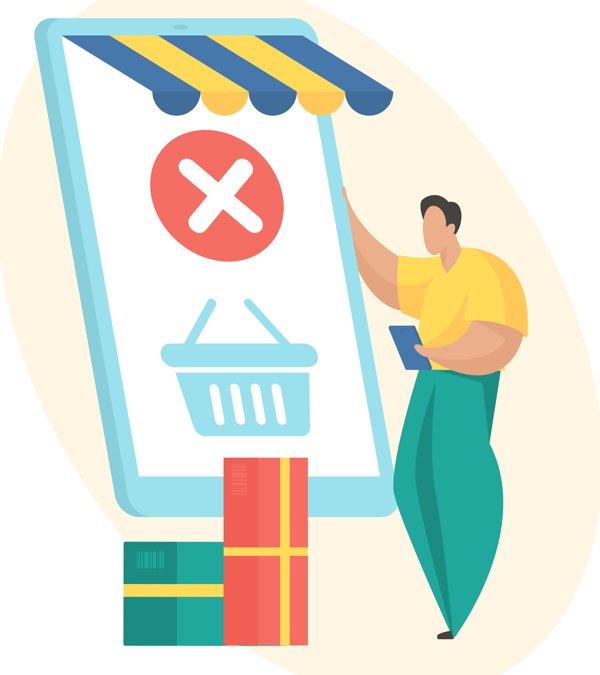
Misstep #2: Purchasing "budget brand" epoxy to save on upfront costs.
Another mistake epoxy users may unwittingly commit is to purchase a low-grade epoxy resin. Generally, these kinds of resins have a surprisingly low upfront cost, making them an attractive option to unaware buyers.
However, the problem with low-cost epoxy resin is that it's almost invariably produced with low-quality ingredients, which thereby results in low-grade resin products. When this epoxy resin is finally used for its intended purpose, various problems may manifest.
In some cases, the epoxy components might fail to blend even when mixed properly. Other times, the resin may mix well, but result in imperfections during the curing process, such as a cloudy or murky finish. And finally, there's the biggest concern of all, which is that the resin may seem fine even up to the point of "fully" curing, only to ultimately crack, break, or fail to endure what should not be a problem for any decent epoxy resin.
How to avoid the "budget brand" problem.
To sidestep this entire issue, we recommend doing a little research before committing to an epoxy resin product. Look for a reputable provider for your epoxy resin.
When searching, focus on a dealer that provides responsive customer support and features positive user reviews. Read reviews that also include user-submitted photos of project results, which can give you a better idea of what to expect and which will carry more credibility than text alone.
Each of our UltraClear Epoxy products is produced to a high manufacturing standard. We also offer comprehensive customer support both before and after purchase; unlike many other resin dealers, we don't abandon our customers after they's place their orders.

Misstep #3: Buying from an unknown or disreputable epoxy dealer.
When shopping for resin, it can be quite difficult to tell a trustworthy dealer from one that has successfully put up a seemingly legitimate facade.
These days, it's easy for shady sellers to fabricate a positive reputation through submission of fake reviews, AI-generated photographs, and misleading potential customers with look-alike products that have a similar name or appearance to a credible brand, but which aren't that brand.
Imported—and unregulated.
Deceptive epoxy sellers often import their product from overseas to avoid having to satisfy U.S. regulatory standards. These products tend to fail more easily or exhibit displeasing cosmetic flaws and may even be unsafe. When shopping, look for epoxy products that are made in the United States.
Note: Always be careful when searching for a specific brand name—such as UltraClear Epoxy—to make sure you're not clicking on an imitator instead of the real deal.
Misstep #4: Not ordering enough epoxy for a project.
Once you've begun the epoxy process, the last thing you want is to find out partway through that you don't have enough epoxy to finish the job. While it's certainly possible to order more epoxy, then wait for it to arrive so you can finish up, this often leads to a lot of additional work, as epoxy resin that has cured will at the very least need a sanding before you can apply the rest of your finish.
Always measure your project surface area carefully. One you know your dimensions and the depth you want your finish to be, you can contact your epoxy dealer and ask for assistance on determining how much you'll need.
To make things more convenient, you can also use one of our Epoxy Coverage Calculators to get a rough estimate of how much epoxy you'll need for your project.
These calculators can be found on the following pages:
Use the appropriate calculator for the type of epoxy you'll be applying.

Misstep #5: Ordering from a dealer who won't deliver in time.
This last one can be a little more difficult to anticipate.
Sometimes, your epoxy project has you on an imminent deadline. In such situations, you may need to acquire your epoxy product quickly, without room for delay.
While there are many epoxy dealers who serve decent products, a lot of them tend to be slow in delivering them. Even if you pay for a fast delivery speed, it doesn't make much difference if the product itself isn't shipped out promptly.
This can be a problem for anyone who needs the supplies to be ready as soon as possible. If you're on a tight time table, be sure to buy your epoxy from a dealer who has a fast shipping/delivery turnover.
On business days at UltraClear Epoxy, all epoxy orders are shipped the same day if placed before 4:00 PM Eastern Time, with 2-Day Delivery speed.
Have questions? Want advice? Contact us!
If you have any questions about shopping for epoxy resin, or if you'd like assistance in planning an epoxy project, please reach out to us at UltraClear Epoxy—our epoxy experts are ready to assist!
You can contact us via phone or email here. During business hours, you can also text chat online with one of our resin specialists by clicking the Help button at the bottom of your screen.
In our online store, you'll find a variety of useful tools and supplies, ideal for resin projects, plus our award-winning UltraClear Bar & Table Top Epoxy and our UltraClear Deep Pour Epoxy.


